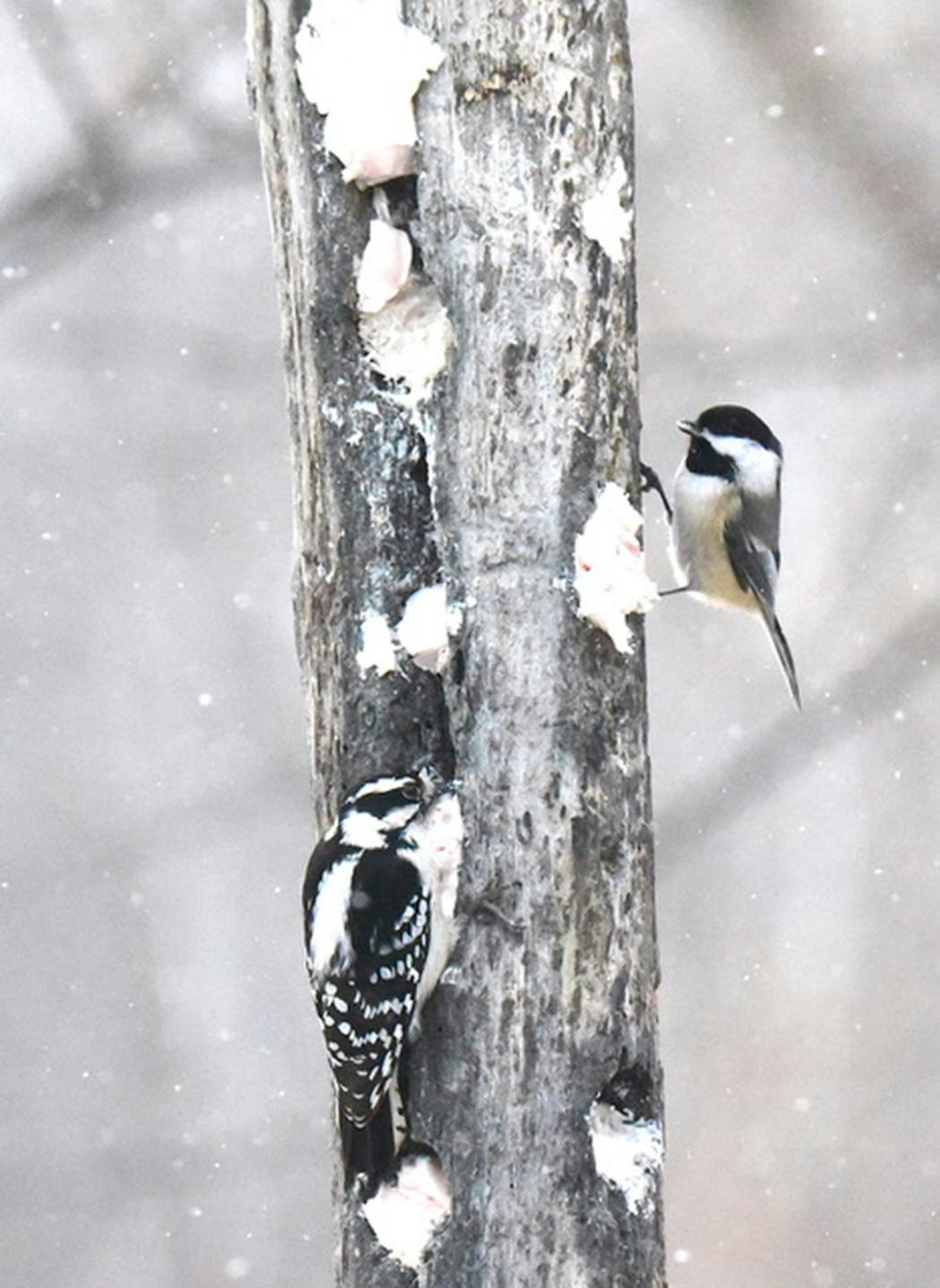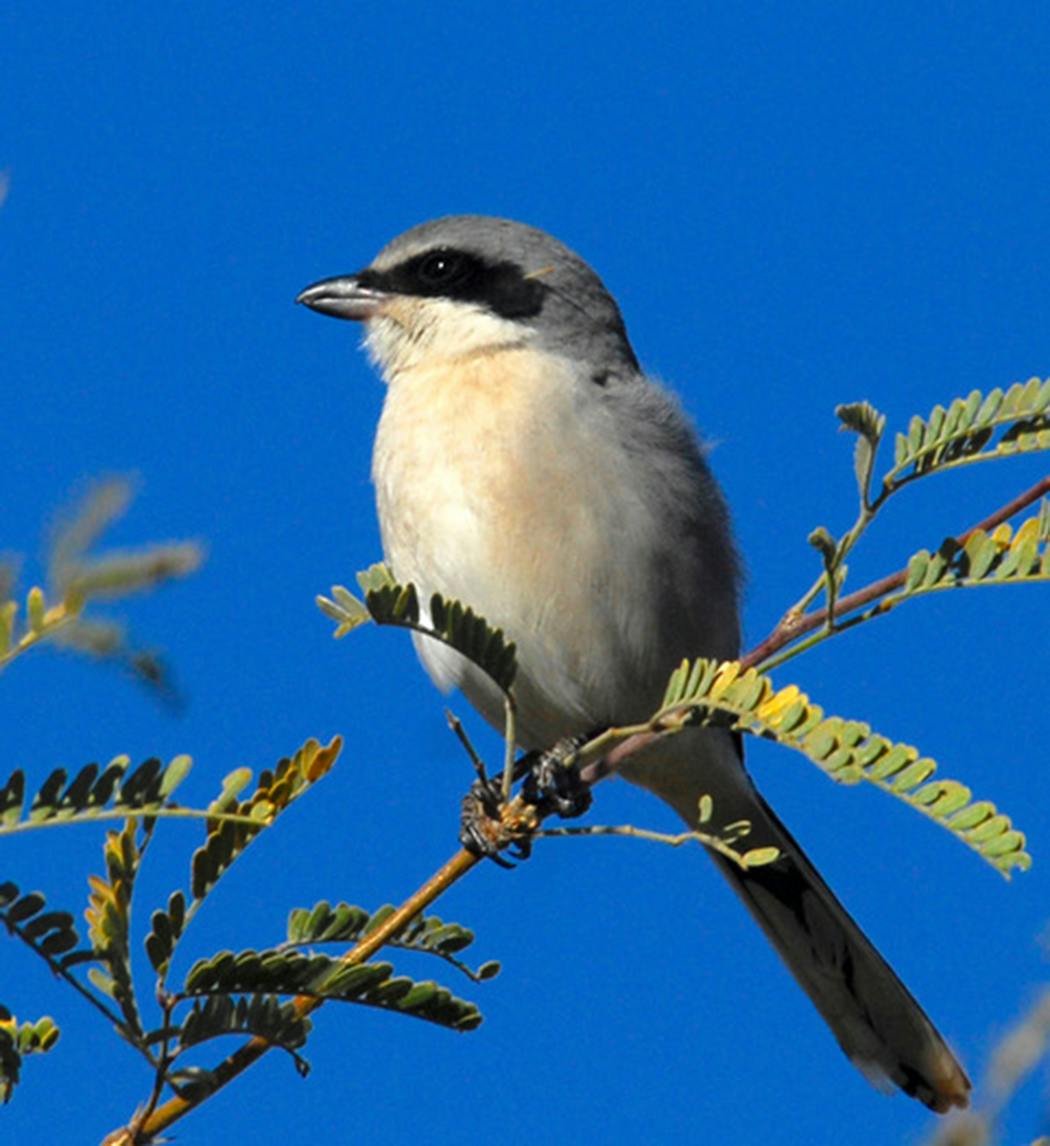Q: Do seed-eating birds taste their food before they eat it? How can a bird like a cardinal tell if a seed is good to eat before they swallow it?
A: Excellent questions and although there hasn't been much research into this topic, the few studies there are point toward birds having a sense of taste. Hummingbirds can detect differences in sugar concentrations in feeders and natural nectar, fruit-eating birds can taste the difference between ripe and unripe fruit and birds avoid monarch caterpillars because these are extremely bitter. Tests have shown that many birds, including Northern cardinals, have a preference for black-oiler sunflower seeds at feeders. Tim Birkhead, British biology professor and author, in his excellent book, "Bird Sense," writes that it is improbable that birds could function without a sense of taste — they need to differentiate between edible and nonedible and even dangerous food items.
Picky eaters
Q: We'd been offering our birds suet plugs that contain nuts and insects, but recently added a feeder with a suet cake cage. Now the birds ignore the plugs and only eat the suet cakes. Is this what we should have expected?
A: Your birds are acting almost like cats, with their switch in suet loyalties. They're telling you that they prefer something about the suet cakes: Maybe there's more animal fat in the cakes and this gives them more of an energy boost, or maybe they taste better. I'd go with the flow and if they want suet cakes, then I'd continue to offer them.
Popular nest site
Q: I seem to have a popular nest box in my backyard: Within an hour of putting it up in the spring, a pair of chickadees took it over. The day they fledged their young, a pair of house wrens began adding sticks and raised seven young wrens. Now a female downy woodpecker has enlarged the entrance hole and spends some time inside. Is she planning to use the nest box in the spring, or was she just looking for insects inside?
A: Your nest box was amazingly popular, and it's wonderful to hear that both chickadees and house wrens brought off their broods successfully. As for the woodpecker, I'd suspect she is planning to use it as a roost box during winter nights, and the fact that she enlarged the entry makes this seem likely. This happens often on my bluebird trail, with downies pecking around the entry to make it larger, then settling in for the winter. This isn't a problem except for the few who apparently get bored during the long nights and spend idle time enlarging the ventilation holes (causing more entry points for rain in the summer). It's nice that they can shelter during the winter, so I don't bug them about it.
Gruesome signs
Q: I have a wood lot behind my home and lately I've been finding creepy things in there, like a mouse carcass stuck to a twig, and once a dead nuthatch hanging from a branch. Do owls do this kind of thing?
A: You're seeing the results of a hunting bird but it's almost surely a shrike, not an owl. Shrikes are called the "butcher bird" for their habit of catching living things, often small birds or mammals, and then stashing them for later eating. They'll use barbed wire fencing, tree twigs and branches, and even, out West, cactus spines, to hold their prey. Called a songbird with a raptor's habits, shrikes are handsome gray, black and white birds, often seen on the tops of trees as they watch for a meal to pass by. It sounds like a shrike has been hunting around your neighborhood.
Pigeon count?
Q: Everywhere I go I see pigeons around the parks and neighborhoods, grain elevators and downtown buildings. Is there any way to find out how many pigeons live in a city like Minneapolis?
A: Now that's an interesting question, and I don't have the answer. Rock pigeons are a non-native species and they seem to be thriving in our human-made environments. Some people are oblivious to pigeons, while some, especially downtown condo dwellers, despise them and their poopy ways. If anyone has a way to estimate the size of their population, I'd love to hear it.
Do birds depend on feeders?
Q: Many of my neighbors have bird feeders and I'm wondering whether this is good for birds. If it's too easy to find food, they might become reliant on feeders and then be at risk if people stop feeding them. I've hesitated to put out a feeder for this reason. What do you think?
A: I think you can go ahead and add your own feeder to the neighborhood buffet, since it won't cause harm to the birds. Even though it may not be apparent to us, birds spend the majority of their time, even in winter, hunting for wild foods, like plant seeds, berries and hibernating insects. Studies have shown that except on the coldest days, feeders supply less than 25% of a bird's diet. They don't become reliant on feeders and in fact, if feeders disappear, they just spend more time searching for food out in nature.
Laundry-room mallard
Q: This spring my family was fortunate enough to be able to witness one of nature's wonders, as a mallard duck built her nest in our garden. We viewed the whole process from our laundry room window, and got to see her lead her seven ducklings to the nearby creek. Doing some reading about ducks and nesting, I learned that ducks sometimes return to the same location in subsequent years. Should we leave the old nest alone, with its broken eggshells, etc., or should we clean out the area?
A: Oh, how I envy your family being able to watch the entire nesting process for a mallard, and I loved the photos you sent. I'd say that cleaning away the old nest and debris to provide for a fresh start is the way to go. If your mallard comes back next year, she wouldn't re-use the old material but would start over.
Note to readers: A recent column inspired readers to send in their own examples of animals apparently playing:
Jim McKenzie of St. Paul, sent a lovely description of a playful scene he and Patti Lazarus witnessed on a long-ago trip to Siena, Italy: "As a flock of birds (swifts?) wheeled 100 feet in the air above us we observed a pair pass a large feather back and forth between their beaks, and they seemed to be playing together. It was wonderful, the kind of thing that made us want to shout to the people in the square, 'Hey, did you see what we just saw?' "
Michele Ireland and her kids encountered a pair of snapping turtles on a rock near a culvert gushing into Minnehaha Creek a few summers ago. One turtle didn't budge, but the other would dive into the torrent and ride it down for a bit before circling back up to the rock. "He repeated this routine quite a number of times," Ireland wrote, and it was a fun thing to see.
St. Paul resident Val Cunningham, who volunteers with the St. Paul Audubon Society and writes about nature for local, regional and national newspapers and magazines, can be reached at valwrites@comcast.net.

The 5 best things our food writers ate this week

A Minnesota field guide to snow shovels: Which one's best?

Summer Camp Guide: Find your best ones here

Lowertown St. Paul losing another restaurant as Dark Horse announces closing




